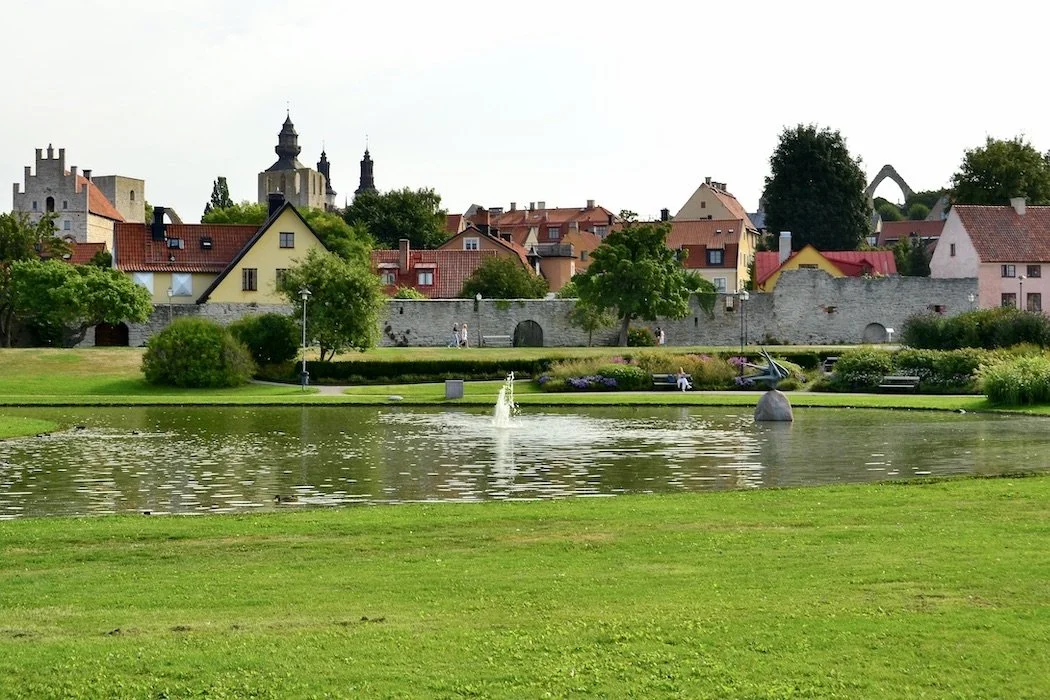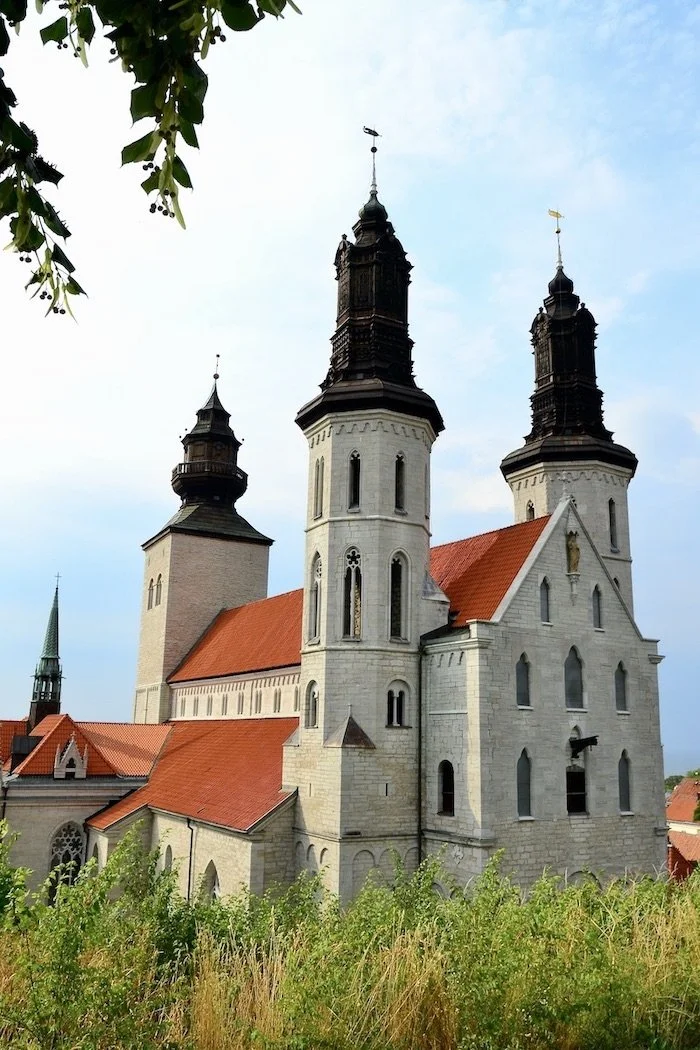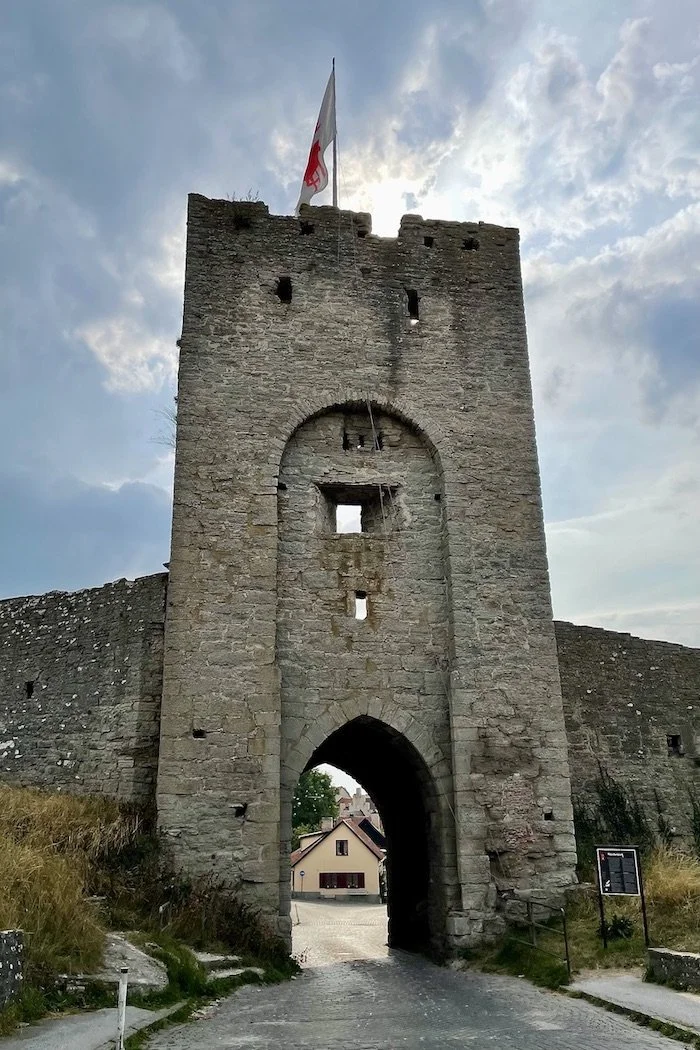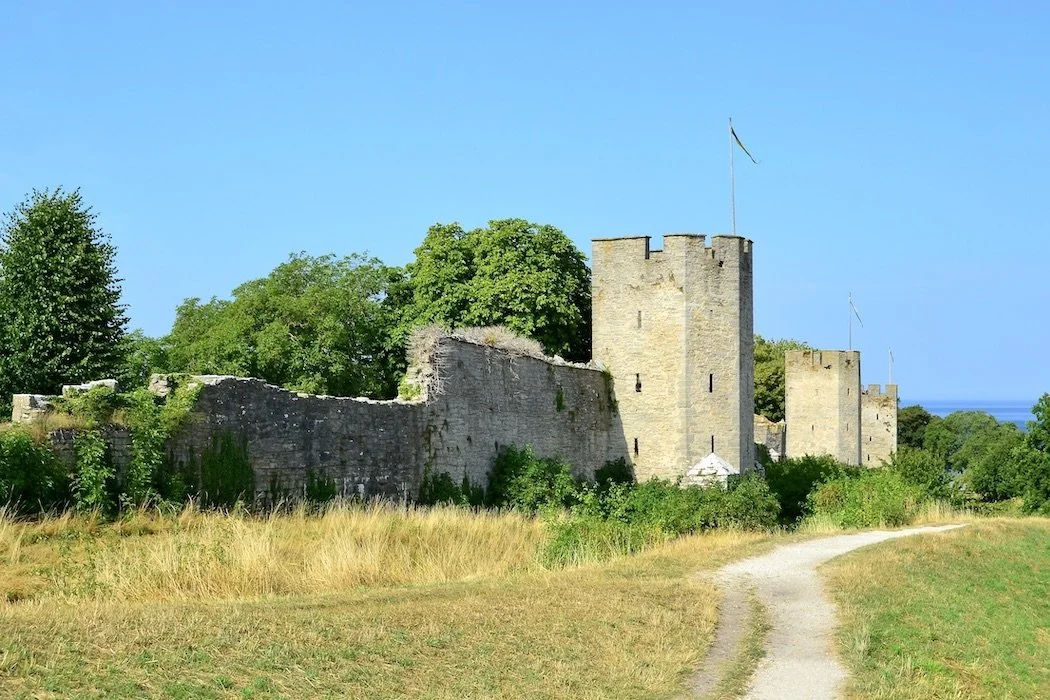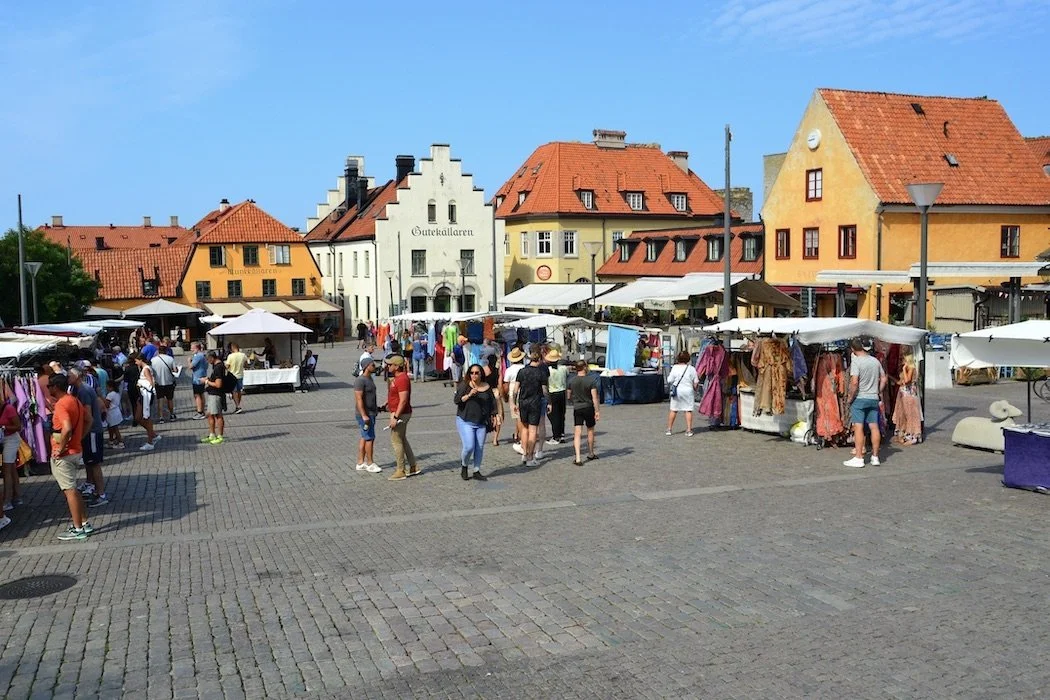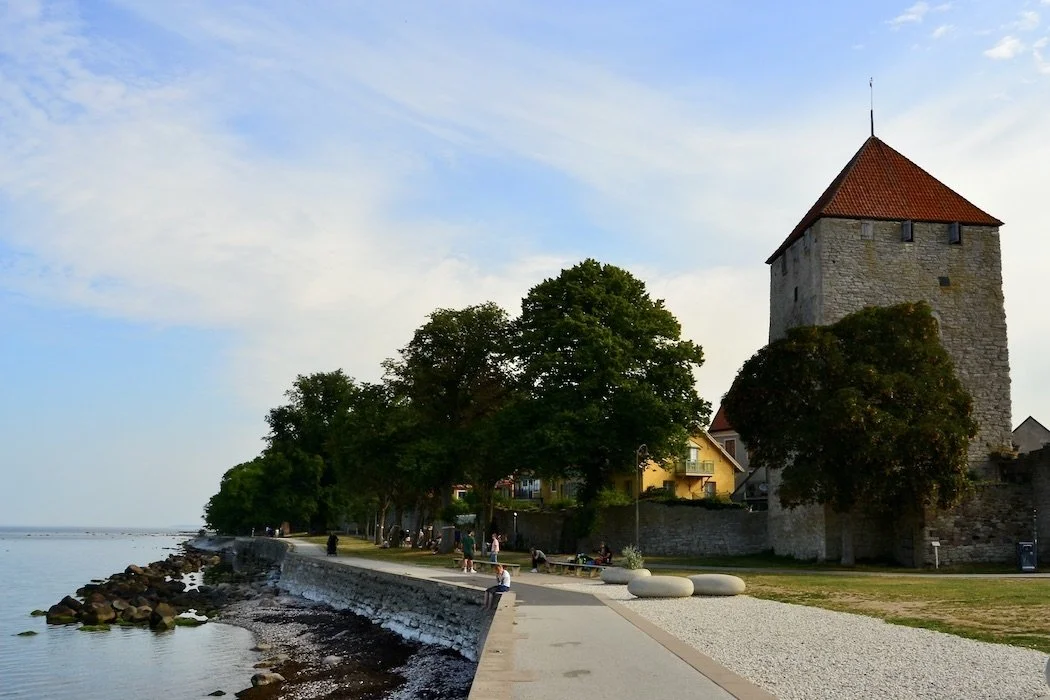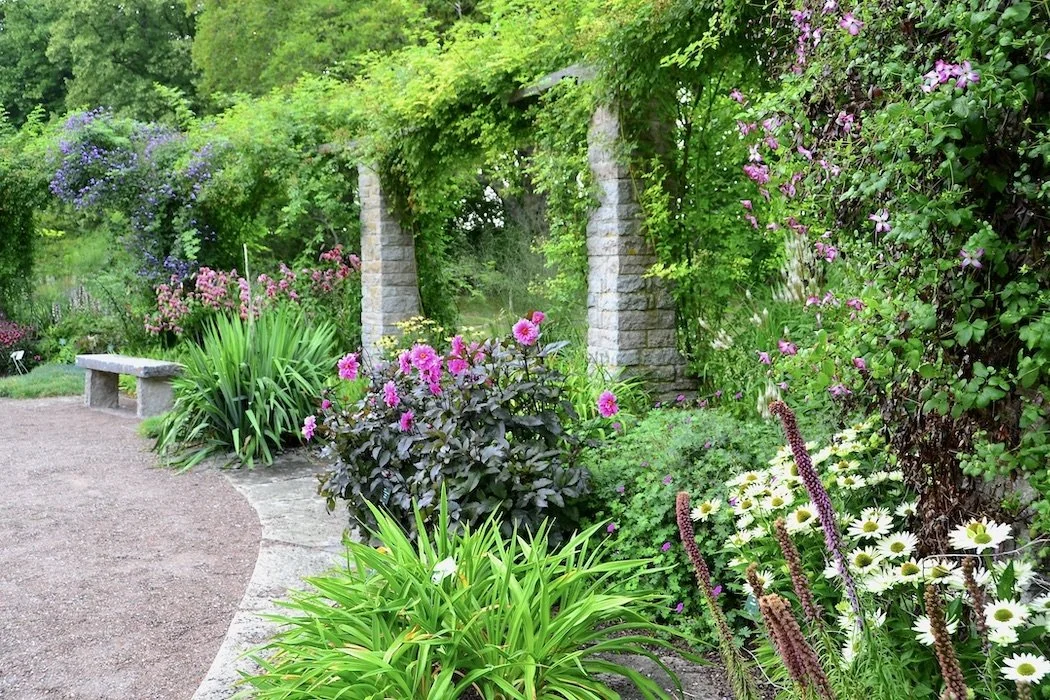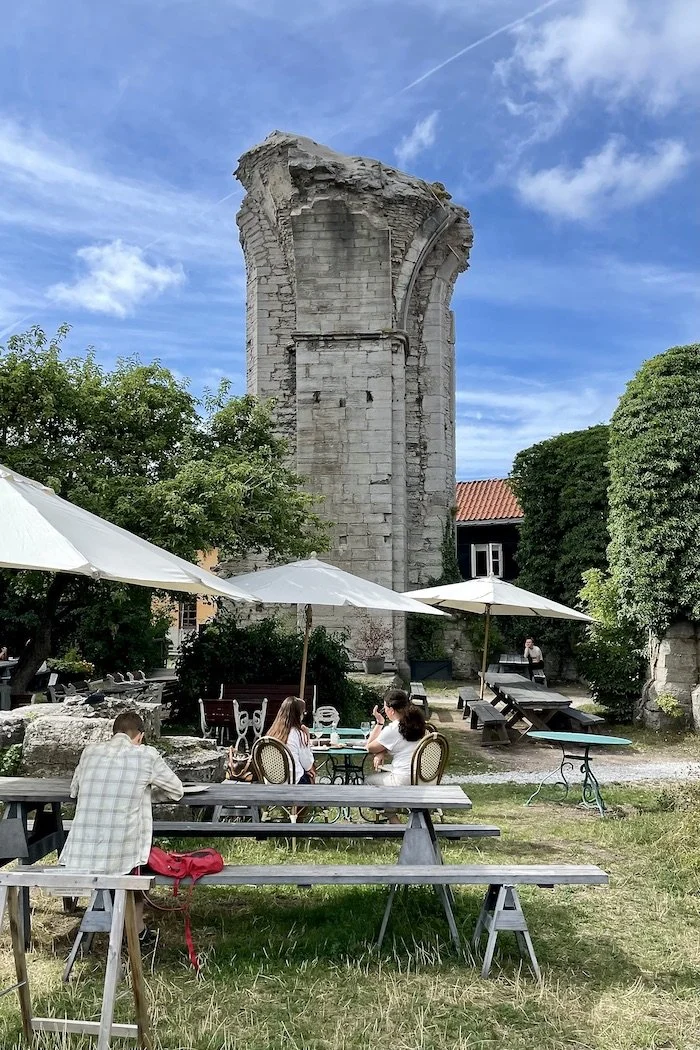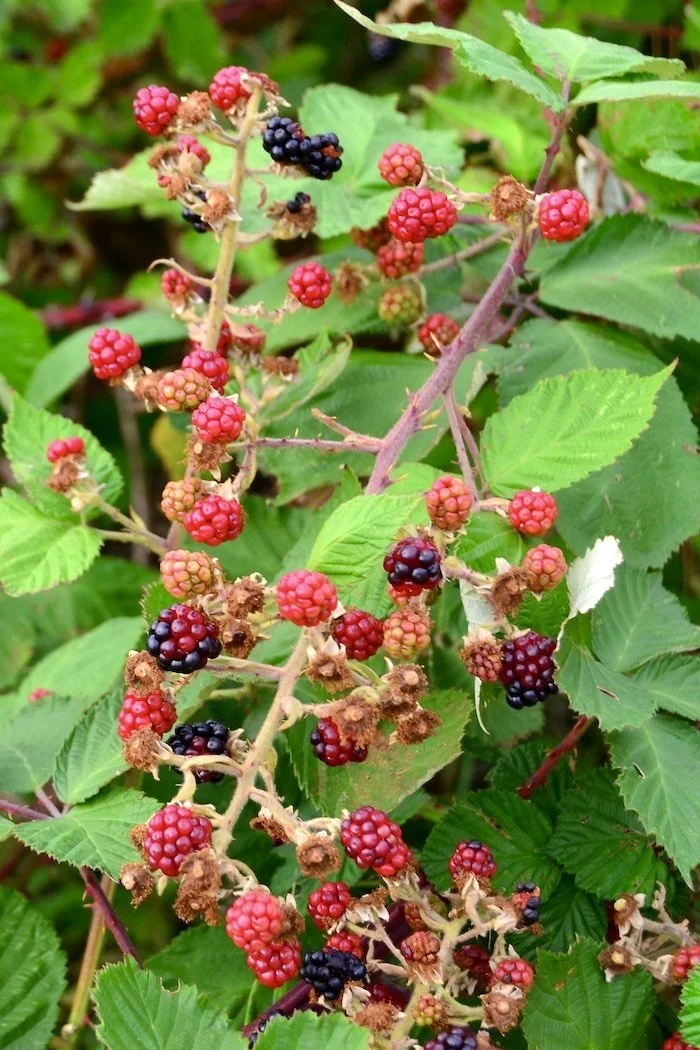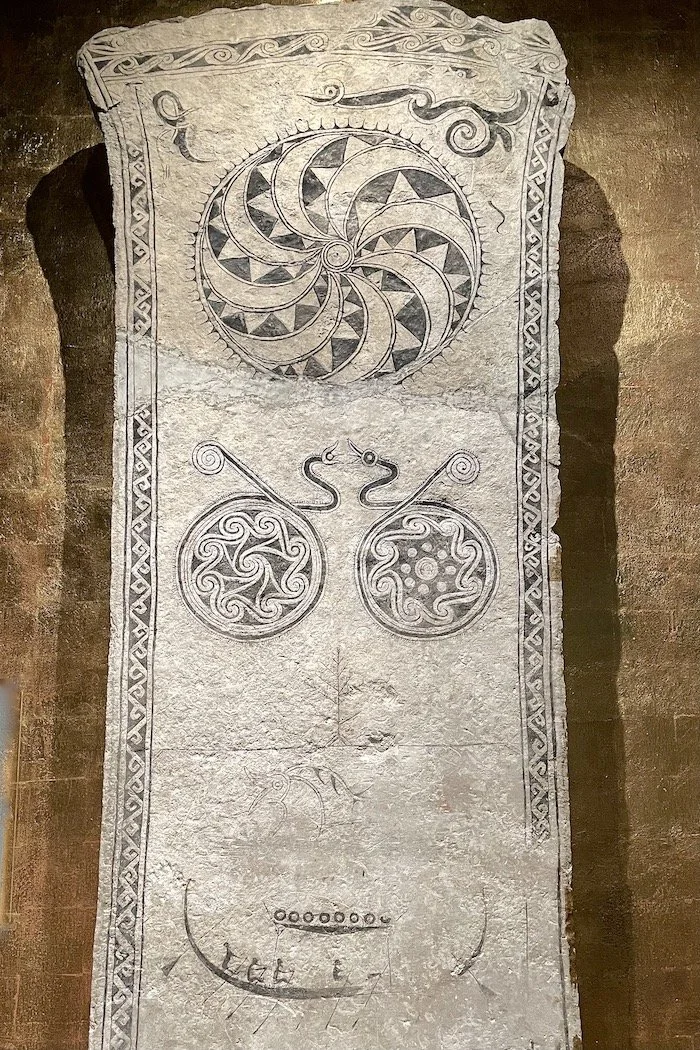Discover Visby Offshore
Visby and the medieval sea wall seen over Almedalen park
“One does not discover new lands without consenting to leave the shore…” ― Andre Gide
In the Baltic Sea, off the east coast of Sweden, lies the island of Gotland whose capital, Visby, is better preserved than any other medieval walled, commercial city in Northern Europe. Unsurprisingly, that has earned the entire town UNESCO status. Yet Visby remains a fully functioning modern town, both within the planned ancient street network and outside the walls, even allowing access for residents’ cars through three ancient gates and parking in courtyards or former warehouses. Though there is evidence near the main square of a Late Stone Age encampment, it was the Vikings who permanently settled Visby and gave it an Old Norse name meaning “village of the place of sacrifices”.
Steep limestone slopes surround the natural harbor around which the town evolved. Yet, ramparts to the north, east, and south were deemed necessary to protect against foreign and Swedish assailants as Visby became an important trading hub in the Baltic. Due to its association with the Hanseatic League, the town flourished as evidenced by 200 old warehouses and merchant quarters that remain in use today as homes, hotels, and more. The medieval fortifications are nothing less than amazing. Constructed in the 13th and 14th centuries, the town wall is 3.4 km (2 mi.) long, circumscribing the entire inner city. It is worth a walk on the path around the ramparts to appreciate the height and massiveness of the stone structure that encompasses 27 ground towers and nine hanging saddle towers.
In medieval times, Visby was a hustle and bustle of people, sounds, and smells. The harbor was situated right up at the sea wall, and just inside traders flogged their wares on an open square next to town hall. Buildings were packed closely together, and the narrow lanes were lined with taverns, bathhouses, and guild halls. Local and foreign merchants built stone houses nearest the harbor, while artisans and laborers lived inland. Just outside the wall, there were pasturelands for sheep. Today, symbolic stone statues of sheep are scattered around town, and Gotland still has sheep farms. Therefore, Visby is well-known for knitted and woven woolens, and sheepskins. Modern Visby’s winding alleys and cobbled squares now teem with cozy cafes, good restaurants, and small shops.
Inside the wall, there are no less than ten medieval church ruins, majestic structures, some abutting each other, all built in the 11th-13th centuries, then abandoned after the Protestant Reformation. Some were subsequently used as cattle sheds, outhouses, or quarries for building materials. While impressive parts of each decaying church or monastery remain standing, they are dramatically open to the sky. Only the grand, beautiful St. Mary’s Cathedral, built for German merchants, with three towers visible from the sea, remains in use.
Visby is one of Sweden’s sunniest towns, even when clouds are forecast. Sunshine combined with the protective sea wall makes the free Botanical Garden a delight with its European and exotic plants, shaded paths, and pretty gazebo. If it does rain, The Gotland Museum has fascinating picture stones, unique to the island, decorated with symbols depicting life, death, and belief systems. On the waterfront, the new harbor hosts pleasure boats, and there’s a popular bathing pier across the street from Almedalen Park.
Don’t miss:
Going up the Jungfru Tower near the sea for a feel of what it must have been like to fire upon an approaching enemy.
Serendipity:
Locals along the way- meeting a woman picking wild blackberries on a narrow path high above the cathedral who pointed out the best picking spot.
Lunch Tip:
Bakfikan on the main square for superb fish soup. Or, for Fika (Swedish coffee break): St. Hans Café to enjoy coffee and cardamom rolls in the backyard amongst church ruins.
Bedtime:
Hotell Villa Borgen inside the old town is small, cozy, and friendly with a secret garden and an excellent breakfast.
Subscribe for inspiration to have my posts drop directly into your inbox. *If you enjoyed what you read, please share this post with like-minded travelers.*
*All photographs are mine, taken with my Nikon D3100 or iPhone 12 Pro.*

